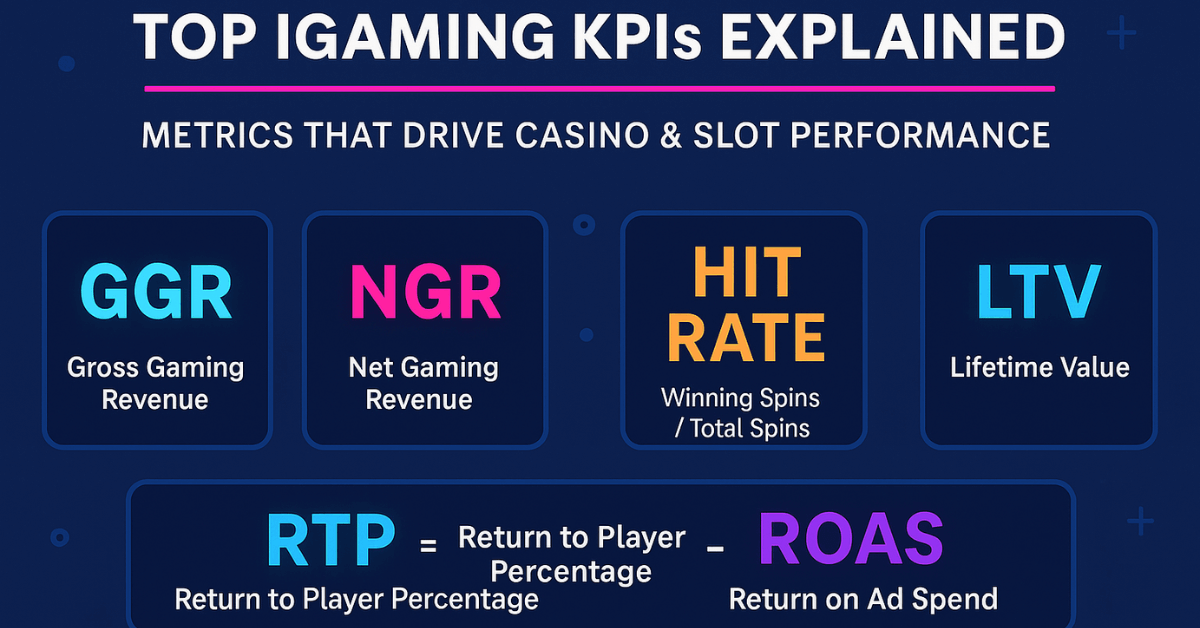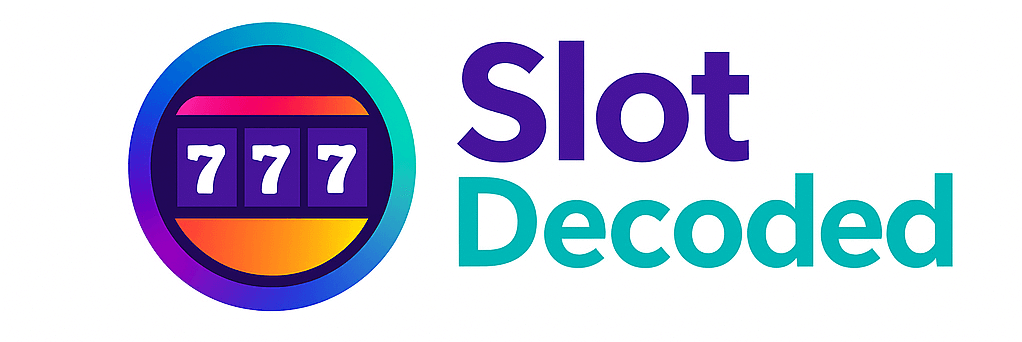
In the ever-evolving world of iGaming, understanding and tracking the right iGaming KPIs (Key Performance Indicators) is critical to success. Whether you’re a casino operator, game provider, affiliate, or investor, KPIs help evaluate performance, guide strategic decisions, and highlight growth opportunities.
To fully leverage your strategy, focus on key iGaming KPIs.
Understanding these iGaming KPIs is essential for all stakeholders.
This guide will walk you through the most important KPIs in the iGaming industry, explaining what they mean, why they matter, and how to calculate them. Each metric comes with its formula and practical insights to help you apply it effectively.
🎰 1. RTP (Return to Player)
Definition: The percentage of total bets a slot or game returns to players over time.
Formula:
RTP (%) = (Total Winnings Returned to Players / Total Wagered) × 100Recognizing important iGaming KPIs can significantly impact your decision-making.
Evaluating hit frequency among the iGaming KPIs is crucial.
Example: If a slot returns €95,000 from €100,000 wagered: RTP = (€95,000 / €100,000) × 100 = 95%
Why It Matters: A higher RTP generally means better long-term player value, but lower profitability for the casino. Balancing RTP with entertainment value and volatility is key.
⚡ 2. Hit Frequency (Hit Rate)
Definition: The rate at which a game generates winning spins or outcomes.
Formula:
Hit Rate (%) = (Number of Winning Spins / Total Spins) × 100Example: 200 wins in 1,000 spins: Hit Rate = (200 / 1,000) × 100 = 20%
Why It Matters: High hit frequency creates excitement and frequent engagement, while lower hit rates often accompany high-volatility slots.
💣 3. Volatility (Variance)
Definition: Measures the risk level and payout behavior of a game.
How It’s Measured: There’s no strict formula, but game providers typically assign volatility levels based on simulations:
- Low Volatility: Frequent small wins
- Medium Volatility: Balanced win distribution
- High Volatility: Rare but big wins
Understanding volatility allows you to analyze iGaming KPIs effectively.
ARPU and other iGaming KPIs give valuable insights into player behavior.
Why It Matters: Helps players choose games that match their risk tolerance and play style. Operators use it to manage game portfolio diversity.
🪙 4. Average Revenue Per User (ARPU)
Definition: Measures how much revenue is generated per active user.
Formula:
ARPU = Total Revenue / Number of Active UsersImproving your conversion rate is one of the key iGaming KPIs.
Example: €50,000 in revenue from 2,000 users: ARPU = €50,000 / 2,000 = €25
Why It Matters: Evaluates the monetization efficiency of your player base.
🧲 5. Conversion Rate
Definition: The percentage of users who complete a specific goal (e.g., deposit, registration).
Formula:
Tracking player retention rates is one of the most telling iGaming KPIs.
Conversion Rate (%) = (Conversions / Total Visitors) × 100Example: 200 depositors from 5,000 visitors: Conversion Rate = (200 / 5,000) × 100 = 4%
Why It Matters: Critical for affiliates, operators, and game providers to track marketing performance.
🔁 6. Player Retention Rate
Definition: Measures the percentage of players who return to your platform after initial engagement.
Understanding churn rates helps in optimizing your iGaming KPIs.
Formula:
Retention Rate (%) = (Returning Players / Total Players) × 100Example: 1,500 out of 3,000 return next month: Retention Rate = (1,500 / 3,000) × 100 = 50%
Why It Matters: Indicates loyalty and game/platform stickiness.
📉 7. Churn Rate
Definition: The percentage of players who stop using the service over a given time.
Formula:
Churn Rate (%) = (Lost Players / Total Players) × 100Why It Matters: High churn signals poor engagement, game fatigue, or ineffective retention tactics.
Player lifetime value is a critical component of your iGaming KPIs.
Monitoring the deposit-to-registration rate provides insights into your iGaming KPIs.
🤑 8. Player Lifetime Value (LTV or CLV)
Definition: Estimates how much profit a business earns from a player over their lifecycle.
Formula:
Game popularity is influenced by various iGaming KPIs.
LTV = ARPU × Average Player Lifespan × Gross MarginWhy It Matters: Informs how much you can spend to acquire and retain users.
💳 9. Deposit-to-Registration Rate
Definition: Measures the proportion of users who go on to make a deposit after registration.
Evaluating return on ad spend should be part of your iGaming KPIs assessment.
Formula:
Deposit Rate (%) = (Depositing Users / Registered Users) × 100Why It Matters: Highlights payment funnel efficiency and intent quality.
10. Game Popularity Index (GPI)
Definition: Ranks games based on aggregated player activity, win volume, and session duration.
Responsible gambling practices are also tied to specific iGaming KPIs.
Formula (example):
GPI = (Play Count × Win Ratio × Session Duration Weight)Why It Matters: Used by casinos and affiliates to promote high-performing games.
📈 11. Return on Ad Spend (ROAS)
Definition: Measures the effectiveness of marketing campaigns.
Formula:
ROAS = Revenue from Ads / Ad SpendExample: €10,000 earned from €2,000 ad budget: ROAS = €10,000 / €2,000 = 5x
Why It Matters: Evaluates the profitability of campaigns and ad channels.
🔐 12. Responsible Gambling iGaming KPIs
Examples include:
- % of Self-Excluded Users
- Session Length Monitoring
- Deposit Limits Set vs. Total Users
Understanding win rates helps shape your overall iGaming KPIs strategy.
These aren’t tied to revenue but are increasingly vital in regulatory environments.
🧾 14. Net Gaming Revenue (NGR)
Definition: GGR minus bonuses, promotional costs, and taxes.
Formula:
NGR = GGR – Bonuses – Taxes – Licensing FeesIn summary, tracking iGaming KPIs is essential for maximizing success.
Ultimately, focusing on the right iGaming KPIs can lead to long-term success.
Example: If GGR is €50,000 and you offer €5,000 in bonuses and pay €3,000 in taxes: NGR = €50,000 - €5,000 - €3,000 = €42,000
Why It Matters: NGR provides a clearer picture of the actual earnings after business expenses and promotional spend. It’s what most affiliate deals and financial reports are based on.
🎯 15. Win (House Win)
Definition: The actual profit retained by the house (casino) from a game or player session.
Formula:
Win = Total Bets – Total PayoutsNote: In many cases, this is the same as GGR. However, when looking at individual sessions or player-level analytics, “win” can be tracked more granularly.
Why It Matters: Helps assess profitability at a per-player, per-game, or per-session level — critical for targeted promotions or loyalty programs.
16. Gross Gaming Revenue (GGR)
Definition: The headline revenue from gaming activity in a period—total settled stakes minus total player winnings (on those same settled rounds). Often includes both cash and bonus stake value per policy; voids/refunds are excluded.
Formula:
GGR = Total Settled Stakes − Total Player Winnings
If you show voids/refunds explicitly:
GGR = (Total Settled Stakes − Voids/Refunds) − Total Player Winnings
Slots (land-based) shorthand:
GGR = Coin-In − Coin-Out
Example:
Players stake €1,000,000 during the period and win €960,000 back.
GGR = €1,000,000 − €960,000 = €40,000.
If €10,000 of those stakes were voided/refunded:
GGR = (1,000,000 − 10,000) − 960,000 = €30,000.
Final Thoughts
Understanding iGaming KPIs allows operators, studios, and affiliates to operate more efficiently, anticipate trends, and maximize revenue while delivering a better player experience. Whether you’re optimizing ad spend, evaluating a new game, or monitoring churn, data-driven decisions backed by these KPIs can define success.
Want to go deeper? Start by tracking 3–5 of these KPIs consistently and build dashboards that align with your growth goals.
FAQ: iGaming KPIs (Casino & Slots)
What’s the difference between GGR and NGR?
GGR (Gross Gaming Revenue) = Total Stakes − Player Winnings (cash + bonus stakes in, cash winnings out).
NGR (Net Gaming Revenue) ≈ GGR − Bonuses − Jackpot Contributions − Platform/Provider Fees − Payment Costs − Taxes/Levies.
NGR is closer to “keepable” revenue and the basis for margin analysis.
What does NGR actually include or exclude?
It varies by contract. Common deductions: bonus cost, free spins, provider rev-share, jackpot funding, PSP fees/chargebacks, duties. Align definitions across BI, finance, and affiliates.
ARPU vs ARPPU — what’s the difference?
ARPU = Revenue / Active Users (all actives).
ARPPU = Revenue / Paying Users (depositors only).
ARPU tracks overall monetization; ARPPU reveals spender depth.
How do I calculate conversion from registration to FTD?
FTD Conversion % = First-Time Depositors / New Registrations × 100.
Track by channel/geo/device to catch funnel friction early.
What retention rates should I monitor?
D1/D7/D30 Retention % = Returning Actives on Day X / New Actives Day 0 × 100.
Add Reactivation Rate (return after 30+ days) to see win-back impact.
What’s churn and how do I compute it?
Churn % (period) = Churned Users / Starting Active Users × 100 where churned = no activity for your threshold (e.g., 30 days).
Pair with retention to see net movement.
LTV (Lifetime Value) — simple vs robust?
Quick proxy: LTV ≈ ARPU × Avg. Lifespan (months) × Gross Margin %.
Robust: discounted cohort cash flows (revenue − variable costs) over time. Use cohort LTV to set CAC limits.
Bonus cost and efficiency — which KPIs matter?
Bonus Cost % of NGR = Bonus Expense / NGR × 100.
Effective Wagering Yield = (Incremental GGR from bonused cohorts) / Bonus Expense.
Track contribution rules and game RTP/Volatility mix; busy base games often boost wagering but can mask true cost.
What are the core game engagement KPIs?
Session Length, Spins per Session, Bet per Spin, Time-on-Device, Feature Frequency (e.g., free-spin rate), and Return Visits. Tie these to Responsible Gambling thresholds to avoid unhealthy patterns.
Which payments KPIs matter most?
Approval Rate, Failed Deposit %, Chargeback %, Average Deposit Value, and PSP Cost % of NGR. Payments friction kills FTD conversion.
Can higher RTP hurt revenue?
Higher RTP lowers House Edge per spin but can increase playtime and retention. Model both margin and volume: sometimes 96% RTP outperforms 94% on NGR if engagement lifts materially.
